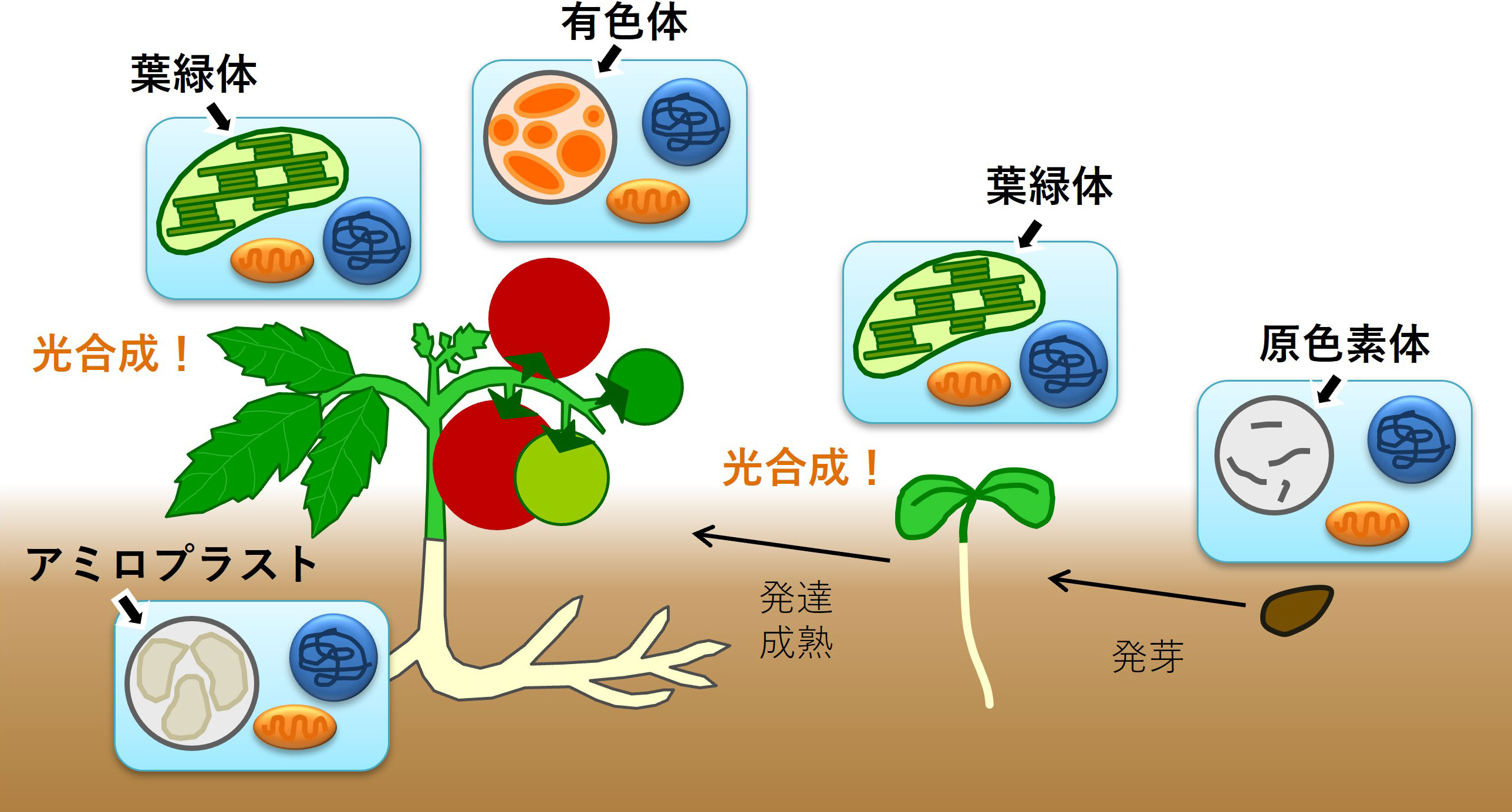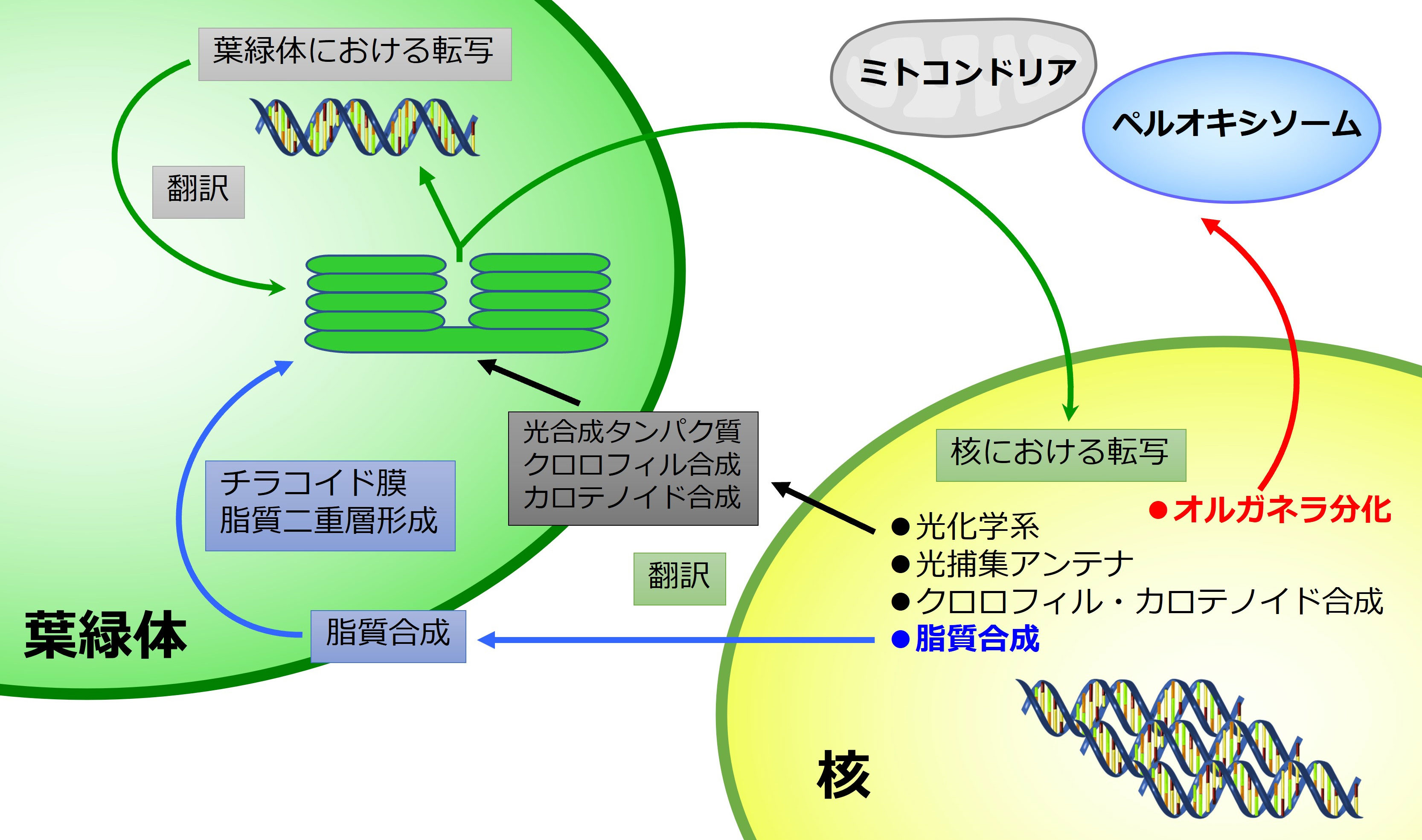
図1
図1.植物の発達過程でみられる色素体分化
種子の細胞では、色素体は原色素体(プロプラスチド)と呼ばれる未分化な状態にある。光の下で発芽すると、子葉細胞の原色素体は葉緑体へと発達する。さらに植物が成長し各器官が分化すると、色素体もその器官の細胞の役割に応じて多様に分化する。例えば、葉の細胞では光合成を担う葉緑体が、花弁や果実ではカロテノイドを蓄積した有色体が、根端の細胞や貯蔵組織の細胞ではデンプン粒をため込んだアミロプラストが発達する。
Figure 1. Plastid differentiation during plant development
In seed cells, plastids exist in an undifferentiated state known as proplastids. As the plant grows, plastids diversify according to the roles of each cell type. Leaf cells develop chloroplasts for photosynthesis, cells in petals and fruits develop chromoplasts that accumulate carotenoids, and root tip cells or storage cells develop amyloplasts filled with starch granules.


